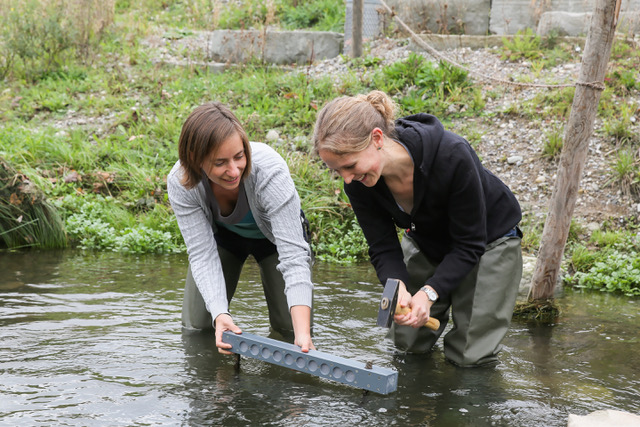In this post, Mirco Bundschuh talks about their recently published paper “Wastewater alters feeding rate but not vitellogenin level of Gammarus fossarum (Amphipoda)”.
Wastewater treatment plants release complex mixtures of so-called micropollutants, i.e., chemicals of anthropogenic origin at low concentrations, including pharmaceuticals, personal care products and endocrine disrupting compounds, into surface waters. There, micropollutants can cause adverse effects in aquatic communities (see e.g. one of our previous papers on the topic).
With the present study, we aimed at determining the potential impact of secondary (i.e. physically and biologically) treated wastewater on feeding rates of the leaf shredding amphipod Gammarus fossarum measured in situ (i.e., within the receiving water body) serving as proxy for impacts on the ecosystem function of leaf litter decomposition. Additionally, endocrine disrupting effects downstream of the wastewater treatment plant effluent were investigated by quantifying vitellogenin (vg) induction in male gammarids using the peptide ILIPGV*GK as proxy, as well as estrogen receptor activation using the Yeast Estrogen Screen (YES). As a model system, a small wastewater-receiving stream in Switzerland was selected. The corresponding wastewater treatment plant contributed approximately 50% to the water discharge downstream of its effluent.

Gammarid feeding rate was significantly reduced 100, 200 and 400 m downstream of the wastewater treatment plant effluent relative to the upstream site. The highest effect, however, was observed at the site located 200 m downstream of the effluent, which was linked to a small creek entering the studied ecosystem just above this sampling point. This creek may have released agrochemicals from the surrounding landscape interfering with the assessed variables. At the same time, the YES assay showed significantly elevated estrogenicity at downstream sites, whereas vg production in male gammarids was not induced. A laboratory experiment, in which gammarids were exposed to wastewater, supported this observation.
These results, hence, suggest that wastewater released into aquatic ecosystems impairs the ecosystem function of leaf litter decomposition. Again, vg levels (using the peptide ILIPGV*GK as proxy) in male gammarids were not affected. As a recent study suggested that not only one but rather a group of eight proteins is involved in vg induction in G. fossarum, measuring only one protein as proxy for vg might, however, have underestimated gammarids overall response to endocrine disrupting compounds. To reduce the release of micropollutants into river ecosystems and thus the impact in local communities, advanced wastewater treatment has been suggested as a promising strategy (see e.g. another of our previous papers on this topic).
The paper was authored by Barbara Ganser, Mirco Bundschuh, Inge Werner, Nadzeya Homazava, Etiënne L.M. Vermeirssen, Christoph Moschet and Cornelia Kienle, and published in Science of the Total Environment.
